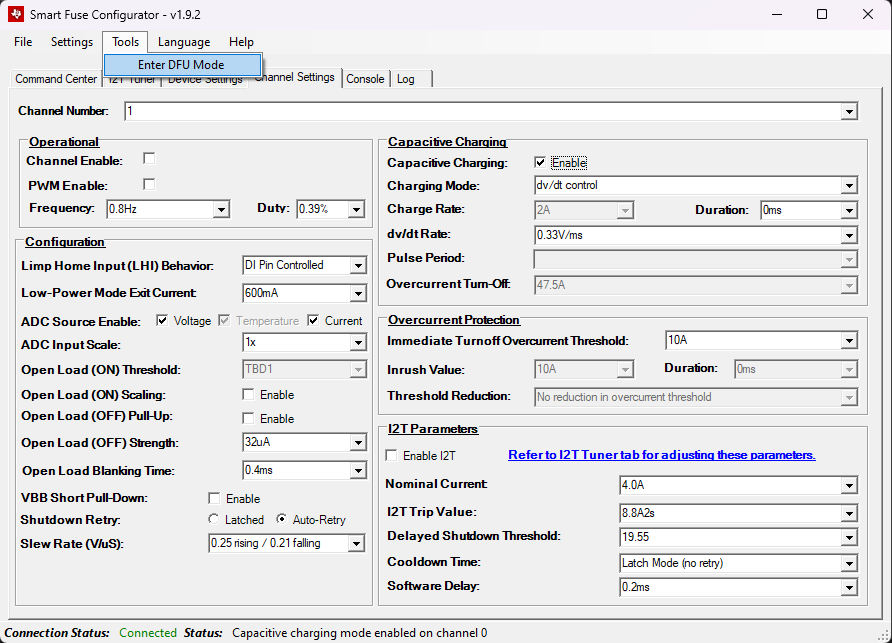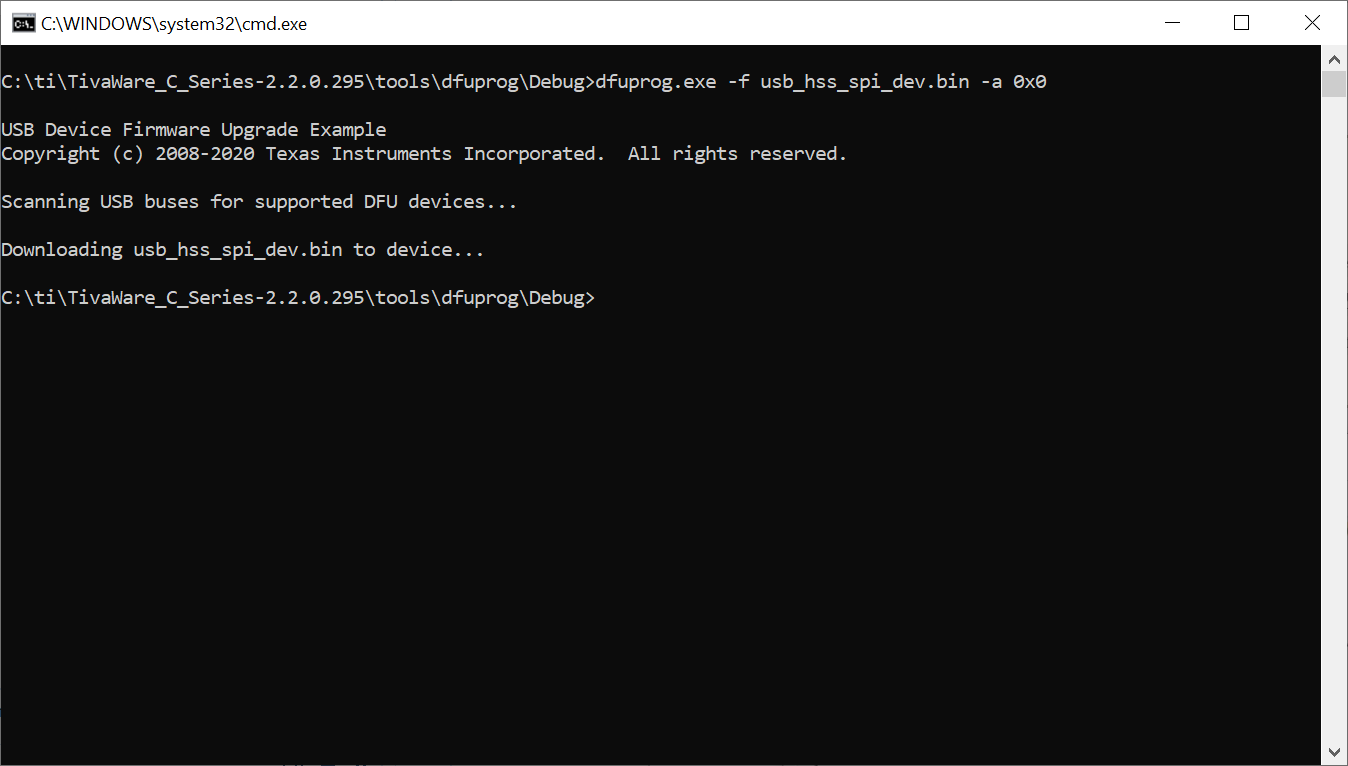SLVUCR9B August 2023 – January 2024 TPS2HCS10-Q1
3.1.8 Firmware Updates
The HSS-HCMOTHERBRDEVM has the ability to update the firmware on the TM4C microcontroller over USB. To enable this, the microcontroller leverages the DFU ecosystem developed by TI. To put the device into firmware update mode, click Tools->Enter DFU Mode.
 Figure 3-16 dfu Mode
Figure 3-16 dfu ModeOnce in DFU mode, the high-side switch disconnects and the device enumerates as a DFU compatible USB device. Note that DFU drivers must be installed to support this mode of operation. These drivers are included with the standard TivaWare installation. The firmware update tool dfutool.exe is also included within the TivaWare installation. This tool can be used to download a binary to the onboard microcontroller of the device.
 Figure 3-17 dfuprog Invocation
Figure 3-17 dfuprog Invocation